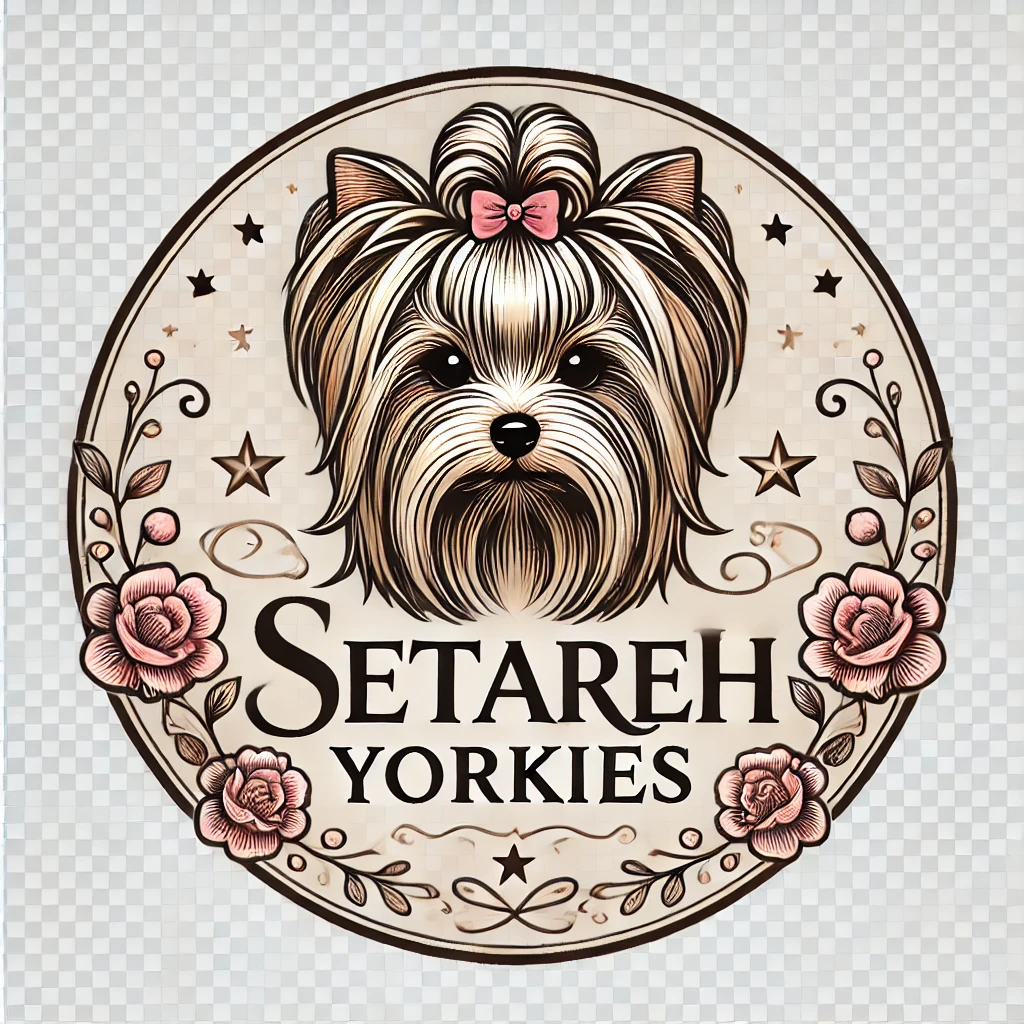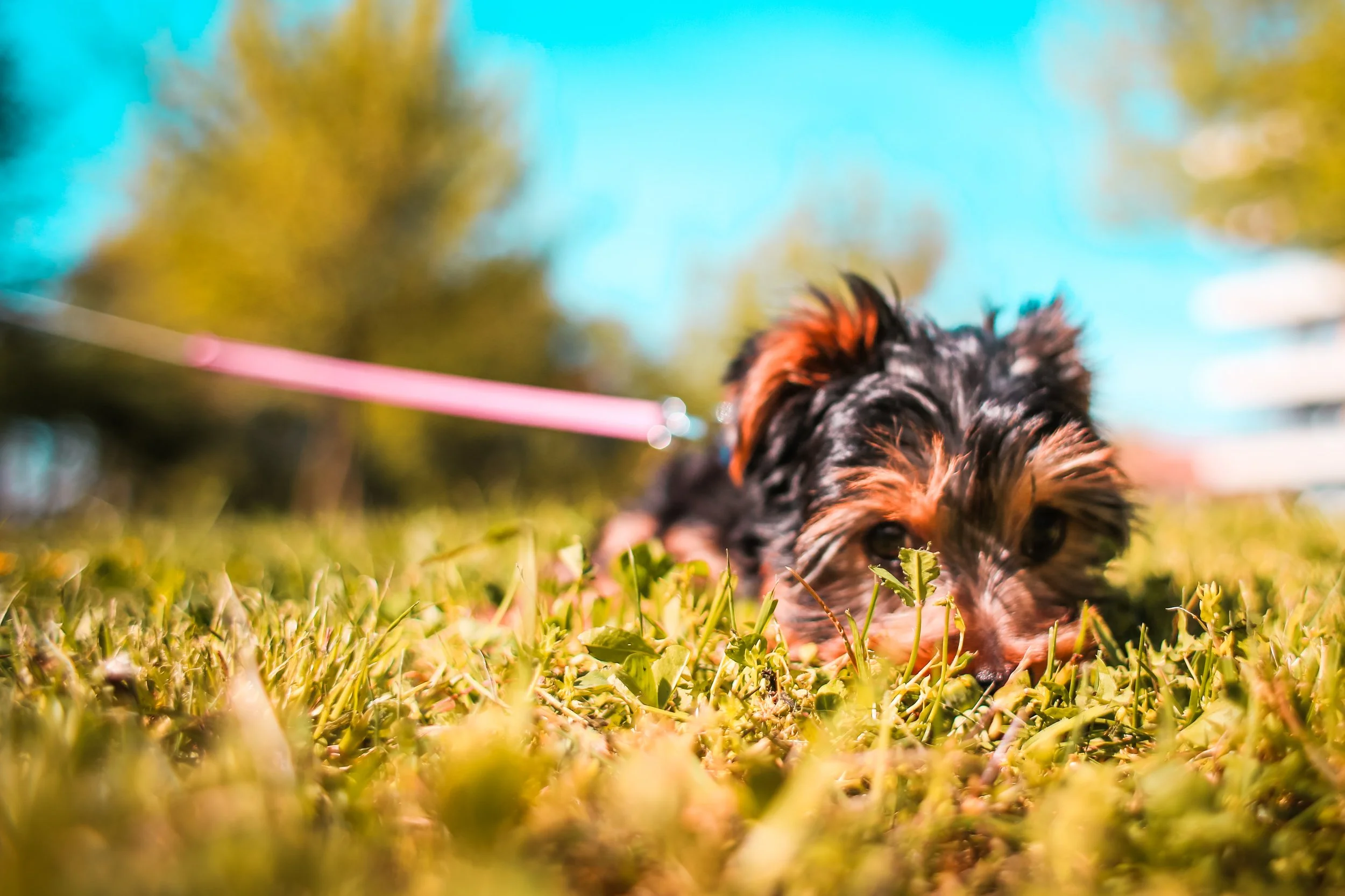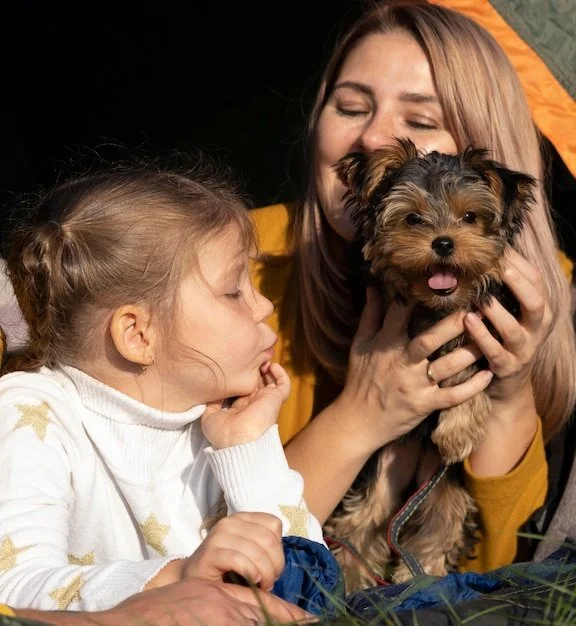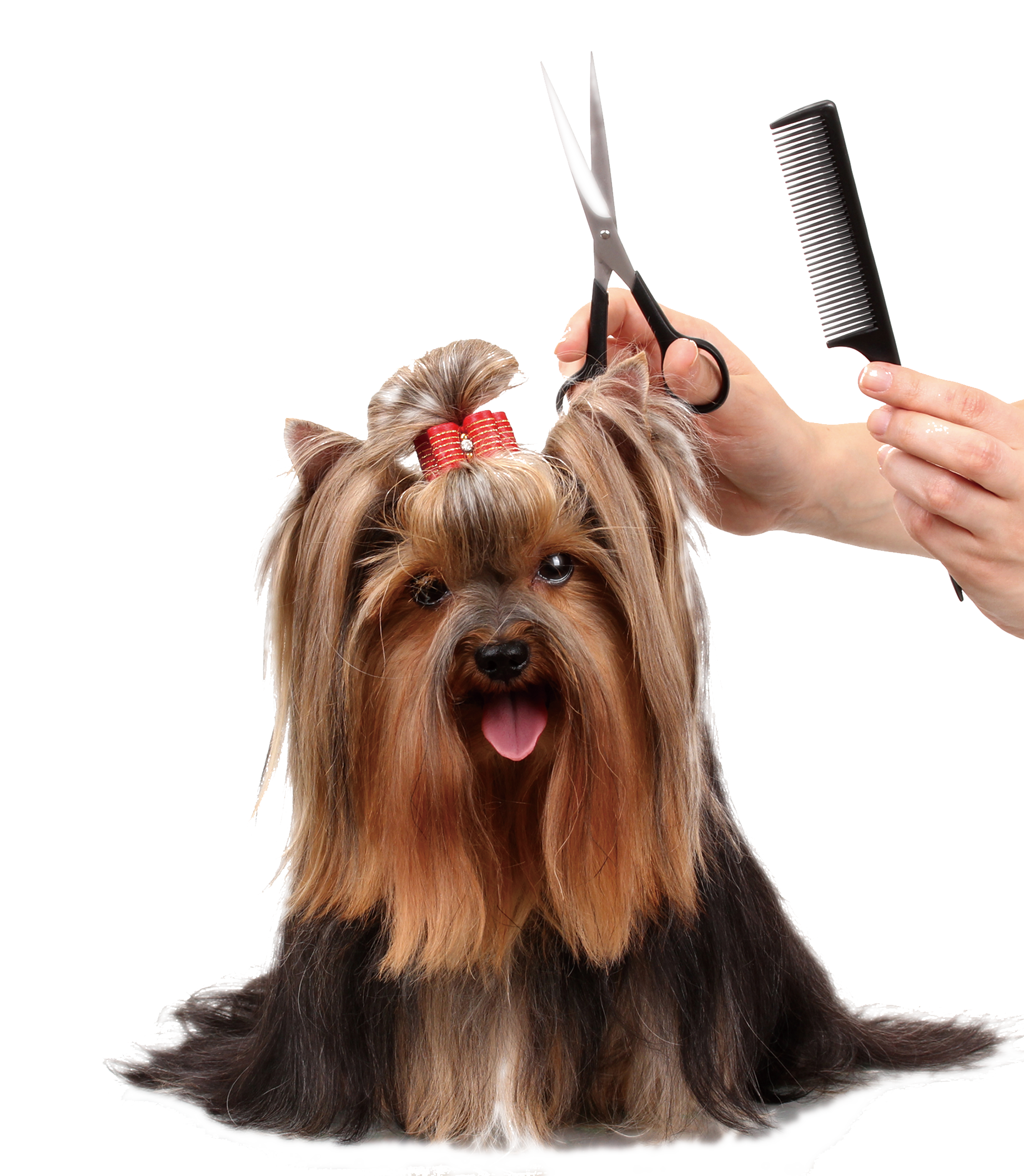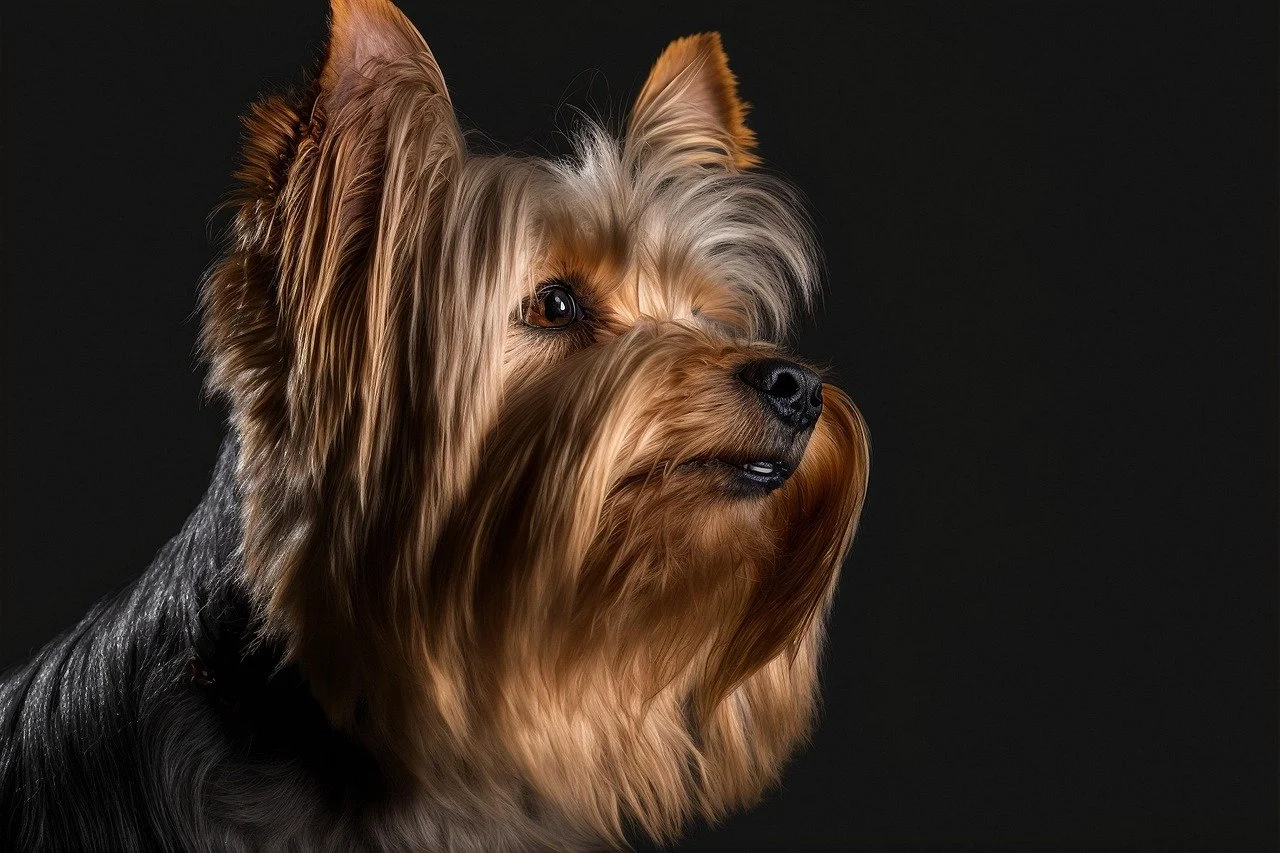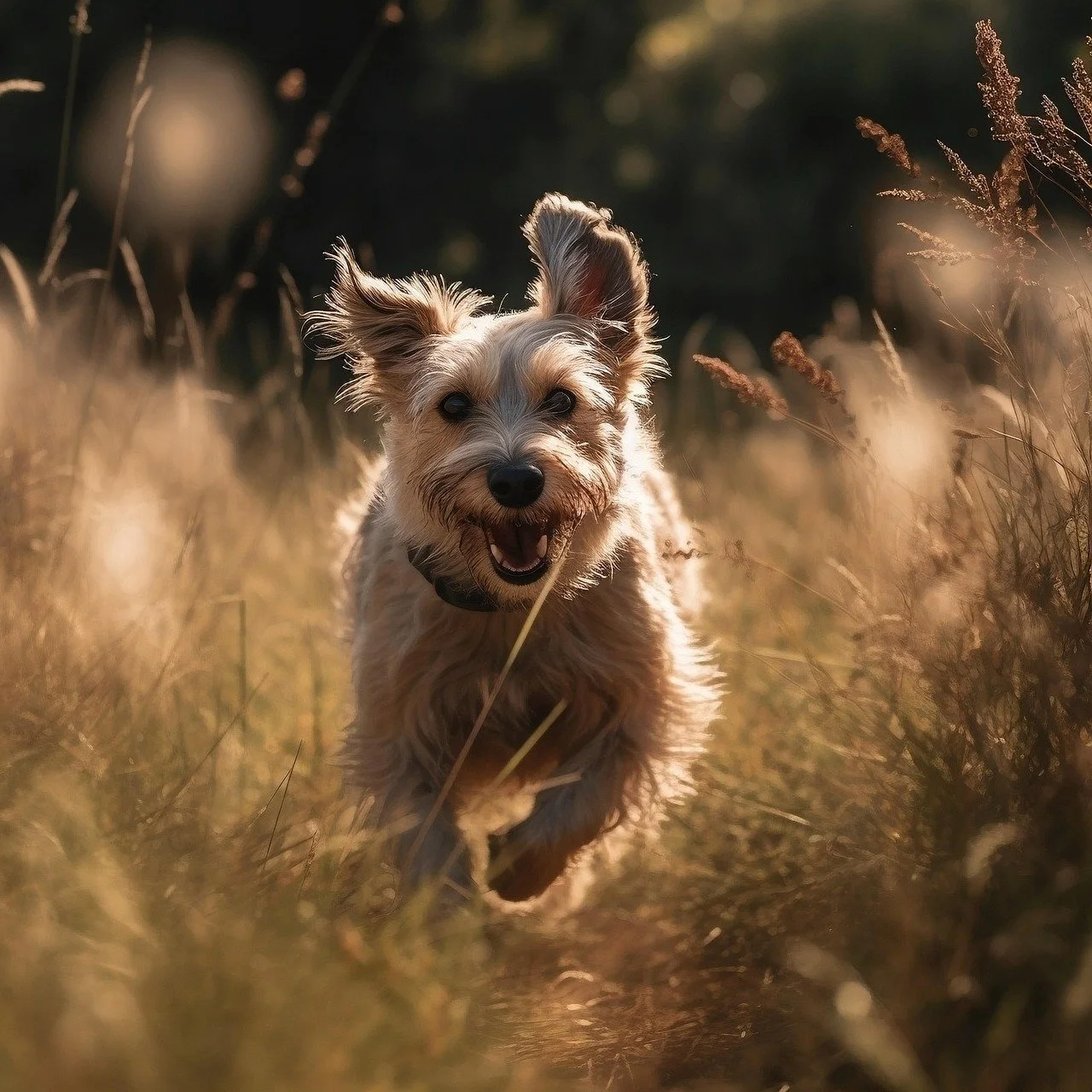
Puppy’s First Year
The first year with your new puppy is full of excitement, learning, and bonding. Here are some tips to help you both thrive:
Choosing a Veterinarian
Select a veterinarian before bringing your puppy home. Ask friends, family, and fellow dog owners for recommendations. Having a trusted vet lined up ensures you’re prepared if an emergency arises in those first few days.
Introducing Your Puppy to Other Pets
Introduce your puppy to your other animals slowly and always supervise interactions until your puppy is old enough to handle themselves. Even if you trust your current pets, never assume they’ll be gentle without proper introductions.
Continue giving your existing pets plenty of attention so they don’t feel left out or jealous.
Think of it like introducing a new sibling—balance is key.
Safety at Home
Puppies are small and can move quickly underfoot. A bell on your puppy’s harness or collar can help you keep track of them, especially in the early days when they’re exploring and you’re still getting used to their movements.
Your Puppy’s Education 📚🐾
The Once your puppy has settled into their new home and you’ve started to bond, it’s time to expand their world. Socialization and positive training from an early age set the foundation for a confident, well-mannered companion.
Socialization
Expose your puppy to a variety of people, pets, and environments early on—the earlier, the better. Take them for short car rides (even just around the block) and arrange safe introductions to friendly, vaccinated pets. The goal is to make new experiences fun and positive so your puppy grows into a happy, adaptable adult.
I recommend reading this important article: Socializing: Why “Later” Is Never Enough.
Positive Reinforcement Training
Begin basic training right away. Three essential commands to start with are:
Come
Stay
Sit
Also teach Drop It to prevent your puppy from picking up or chewing something they shouldn’t. Use positive reinforcement—reward desired behaviors with praise, treats, or play. Some owners find clicker training especially effective for marking the exact moment their puppy gets it right.
Dog Parks & Day Care
Before taking your puppy to a dog park, be sure they are fully vaccinated and confident in new situations. For some puppies, a reputable doggie day care may be a safer, more controlled environment for socialization and play.
This is a great article: The Truth About Dog Parks
Our Favorite Training Resource
We love BAXTER & Bella—an online training program that’s fun, easy to follow, and accessible anywhere you have an internet connection. Their step-by-step program includes classes, courses, games, socialization activities, and unlimited live help from professional trainers.
Special Offer: We’ve partnered with BAXTER & Bella to offer you 25% off lifetime access with discount code SETAREH.
Learn more here: BAXTER & Bella Online Puppy School
Puppy Mouthing & Biting 🐾🦷
It’s important to stop your puppy from mouthing, biting, or chewing on your fingers and toes early on—what’s cute now can become a problem as they grow.
Here are two excellent resources to help you address this stage:
I’ve read countless puppy training books, and one of my all-time favorites is Bones Would Rain from the Sky by Suzanne Clothier—an A+++ in my book! Suzanne’s writing is engaging, insightful, and full of heart. Another author I highly recommend is Patricia McConnell, PhD—EVERY single one of her books is outstanding and packed with practical, compassionate training advice.
With patience, consistency, and the right resources, you can guide your puppy toward gentle, polite behavior while building a strong bond of trust and respect.
Grooming Needs for Your Puppy ✂️🛁
Regular grooming keeps your puppy looking their best and helps prevent health issues. Most Yorkie puppies need a bath about twice a month. I usually bathe mine in the kitchen sink or bring them into the shower with me. After they’re clean, I teach them to wait patiently in the corner while I finish my shower—then it’s time for drying (and a little fun!).
Your puppy will also need a full grooming session every 2–3 months, which includes:
Hair trim
Ear cleaning
Nail clipping
Trimming the hair around the buttocks to prevent waste from getting caught
Both Andis and Oster make excellent grooming tools for at-home touch-ups.
Ear Care
Non-shedding breeds like Yorkies naturally grow hair inside their ears. This can trap moisture, dirt, and debris—creating a breeding ground for yeast and bacteria. Regular ear plucking and trimming help keep the ear canal dry and clean.
Use groomer’s scissors to trim hair on the inside of the ear flap and just inside the ear canal.
Keep hair short enough so it doesn’t block airflow or get caught in ear wax.
Supplies to Help You Thrive in Your Puppy’s First Year 🐾🛍️
Starting life with a new puppy is exciting—but having the right tools makes all the difference. Our Puppy Supplies Page lists the products we recommend and personally use to make your first year together smoother, healthier, and more fun. From feeding and grooming to training and play, these essentials will help you and your Yorkie start off strong and enjoy every stage of that all-important first year.
Canine Parasite Prevention: Fleas, Worms, Coccidia, Giardia & Heartworms 🐾🩺
I’ve created an entire page dedicated to my favorite, tried-and-true method for housebreaking a puppy—perfect even if you work outside the home and can’t be there all day.
🐾 Click here to read my full House Training guide.
For extra support, I also highly recommend one of my favorite resources: Way To Go by Patricia McConnell. It’s a quick, practical read packed with tips that make the house-training process smoother for both you and your puppy.
Even a healthy-looking puppy can carry parasites. Even if your puppy has already had a fecal exam by my veterinarian, it’s always wise to have your vet run another exam soon after they come home. Moving to a new environment is stressful, and stress can cause parasites to become more active and easier to detect.
Heartworm Prevention
During mosquito season, protect your puppy from heartworms with a veterinary-prescribed preventative. Revolution is my preferred choice—it covers both fleas and heartworms and is more effective against fleas than Frontline (which has become less effective).
Heartworms are transmitted by mosquitoes, so unless you live in a warm climate with no winter freeze, you do not need to give heartworm prevention year-round.
Always discuss prevention options with your veterinarian.
Flea Control
In addition to Revolution, Diatomaceous Earth can be used as a natural flea control method when applied once or twice a month during flea season.
Be cautious with oral flea/tick products like Trifexis or Simparica.
If your puppy is scratching excessively without an obvious cause, check for dryness and consider adding 1–2cc of fish oil daily. Improvements are often noticeable within a week.
Coccidia
Coccidia is a protozoan parasite that can flare up due to stress. Puppies may initially test negative but develop symptoms (often watery diarrhea) shortly after going home.
Treatment: Albon clears the digestive tract of coccidia, while the puppy’s immune system eliminates the rest.
All my puppies receive Toltrazuril before going home to help prevent infections.
If untreated, severe coccidia can cause dehydration and be life-threatening—seek veterinary care immediately if symptoms appear.
Giardia
Giardia is a common parasite found in soil and water. It can be missed by a standard fecal flotation test, so the Snap test is more reliable.
Symptoms include diarrhea and loss of appetite; severe, untreated cases can be fatal within days.
All puppies go home with Panacur for giardia prevention—please use it as directed.
Some vets may choose to treat even an asymptomatic puppy that tests positive; this is fine, as the medication is safe.
General Deworming Schedule
Keep Safeguard Dewormer 125mL (Panacur) on hand—it’s labeled for goats but is safe and effective for dogs in liquid form.
Dose: 1ml per 5lbs of body weight
Schedule: Every 3 months initially, then every 6 months for life
Prevents most worms except tapeworms and helps protect against giardia
If pudding-like stools persist after your initial supply is gone, continue for another week at double the original dose
Tapeworms
Tapeworms are transmitted when a puppy ingests an infected flea. They appear as small, flat, cream-colored segments (often resembling rice) in the stool or around the anus.
Requires a specific, one-dose treatment from your veterinarian.
Unless your puppy has confirmed tapeworms, no treatment is needed.
Roundworms
Roundworms are common but usually not visible in stool unless the puppy has been treated for them. Regular use of Panacur/Safeguard will prevent infestations.
Important Safety Note:
Never give aspirin or any non-aspirin pain medication without consulting your veterinarian—many human medications are toxic to dogs.
Yearly Vaccinations for Dogs 💉🐾
For decades, veterinarians have routinely recommended annual vaccinations for pets—it’s become second nature. But just like in people, lifelong immunity is often achieved after the initial series and a booster, meaning yearly shots may not always be necessary.
Think about it: you likely completed your vaccines as a child and didn’t need them every year for life. The same can be true for dogs. I recommend:
Puppy vaccine series (per your vet’s schedule)
Booster at one year of age
Titer testing thereafter to check immunity levels before giving additional vaccines
Most “yearly” vaccines are actually only needed every 3–5 years, if at all, depending on your dog’s immunity.
📖 Recommended Reading: Yearly Vaccinations vs. Titer Testing
Spaying & Neutering Your Puppy 🐾✂️
In the past, most veterinarians recommended waiting until a pet was at least one year old before spaying or neutering. This often influenced people to choose female pets as indoor companions, since females tend to “squat” when eliminating, while males may lift their leg and mark… well, everything.
Today, veterinary research and medical technology have advanced, and safe spay/neuter procedures can be done at a younger age. While there is no long-term harm or added benefit to performing the surgery earlier, spaying or neutering after 6 months of age can reduce the risk of certain cancers and other health concerns.
For my small-breed puppies, I recommend waiting until 6–8 months old. This allows them time to grow while still preventing unwanted behaviors. Males neutered at this age often never develop the urge to lift their leg, and will (generally) squat like females—making indoor training easier. And trust me, small males can be every bit as sweet and affectionate as the girls!
Contract Reminder:
You agreed to have your puppy spayed/neutered by 1 year of age. Proof of surgery must be sent to me within 10 days of the procedure. Please include:
A photo of the incision
The invoice and/or medical record from your veterinarian
Pet Insurance for Your Puppy 🐾💙
I highly recommend purchasing pet insurance for your new puppy. Accidents and illnesses can happen unexpectedly, and having coverage ensures you can focus on your puppy’s care—not the cost.
Your puppy comes with 30 days of complimentary coverage through Trupanion. To learn more about how it works and how to activate it, please visit our Insurance Page.
There are many pet insurance companies to choose from, but two I hear recommended most often by breeders and dog owners are Trupanion and Healthy Paws. I encourage you to research and compare options to find the best fit for your needs.
📊 Helpful Resource: Recent Online Comparison of Pet Health Insurance
Reverse Sneezing in Dogs 🐶💨
If your dog has sudden spells where they snort, gasp while taking deep breaths, and pant in between—sometimes lasting several minutes—it may be what veterinarians call a “Reverse Sneeze”.
The medical term is paroxysmal respiration. It’s more common in small breeds or those with short muzzles, like Lhasa Apsos and Boston Terriers, though any dog can experience it. Episodes are usually brief and infrequent, and your dog will return to normal immediately afterward.
While the exact cause isn’t fully understood, reverse sneezing is often seen in dogs with allergies or mild upper respiratory irritation. In most cases, it’s harmless and requires no treatment.
What You Can Do:
Stay calm—your dog will often recover on their own.
If your dog seems distressed, gently place a finger over each nostril for a moment so they must breathe through their mouth. This can create a vacuum in the sinuses and stop the episode.
Hold and soothe your dog during the spell to help them relax.
When to Call the Vet:
If episodes become frequent or prolonged
If you notice nasal discharge, especially yellow or green
If your dog appears in significant distress
Advice courtesy of Leslie Sinclair, DVM
Housetraining Your Puppy🚽🐾
Doggy Manners – No More Jumping!🐕🦺✨
While a puppy jumping up on you might seem “cute” at first, it can quickly become a problem as they grow. Teaching your dog proper greeting manners early will make life easier for you, your guests, and your pup—and your dog will thank you for it in the long run!
📚 Here are two great resources to help:
If you do like when your dog jumps up for a greeting, train them to do it only on cue so it’s a fun trick rather than an unwanted habit.
One of my absolute favorite training books for this (and so much more) is Puppy Primer, written by one of the best in the field. It’s packed with positive, practical techniques you can start using right away.
Tear Stains 🐶✨
Our favorite way to prevent tear stains is by providing filtered or bottled water and feeding a high-quality diet. You can check out our Nutrition Page to see the food we recommend. Ever since we switched to this diet, our dogs have been completely tear-stain free!
If your pup does develop tear stains, here are our favorite products to help:
I’ll Be Home Soon! – Preventing & Treating Separation Anxiety 🐾💛
Puppies explore the world with their mouths — and that means chewing is 100% normal (and necessary!) during teething. The key is directing that chewing to the right things so your furniture, shoes, and hands stay safe.
Why Puppies Chew:
Teething relief — Chewing soothes sore gums between 3–6 months of age.
Boredom — Puppies need mental and physical stimulation.
Exploration — Just like toddlers, they “taste test” their environment.
How to Redirect Chewing:
Provide plenty of safe chew options — Bully sticks, frozen Kongs, rope toys, and puppy teething rings are great.
Rotate toys — Keep things exciting by swapping toys every few days.
Catch and redirect — If your puppy chews something they shouldn’t, calmly remove it and replace it with an approved toy. Praise them for chewing the right thing!
Supervise closely — Use baby gates, playpens, or crates when you can’t watch them.
Extra Tips:
Freeze a damp washcloth (twisted into a rope shape) for a soothing, puppy-safe teether.
Make sure they’re getting enough exercise — a tired puppy is less likely to chew out of boredom.
Avoid letting them chew on old shoes or socks — it’s too easy for them to think all shoes and socks are fair game.
Chewing is a normal part of puppyhood, but with patience, consistency, and the right outlets, you can protect your home and teach your puppy good chewing habits that last a lifetime.
This dog training guide offers practical, compassionate advice on being a confident, natural leader for your dog—helping prevent both fear-based and dominance-related behaviors. Just like a great teacher or parent, you’ll learn how to guide your dog so that being calm and well-behaved feels good to them.
📚 Recommended Reading:
Patricia McConnell’s I’ll Be Home Soon! is one of the most effective resources available for preventing and managing separation anxiety. Her concepts and exercises are based on how dogs naturally interact with each other, making them simple for your pup to understand and easy for you to apply.
Patricia McConnell’s books are must-haves for any dog lover’s library—especially popular with humane societies, rescue groups, and veterinary clinics. Truly, ALL of her books are amazing and highly recommended!
💡 Bonus Resource:
Check out Trisha’s blog, The Other End of the Leash — it’s one of my favorites! Fun, educational, and full of insights that help strengthen the bond between you and your dog.
Exercise & Mental Stimulation 🐶🧠
A tired puppy is a happy (and well-behaved!) puppy — but there’s a balance. Too little activity can lead to boredom, which can cause chewing, barking, or digging. Too much exercise, especially in growing puppies, can put unnecessary stress on their developing joints.
How Much Exercise is Enough?
8–16 weeks: Short, gentle play sessions and a few minutes of walking several times a day. Avoid forced running or jumping off furniture.
4–6 months: 5 minutes of exercise per month of age, up to twice a day. Still avoid high-impact activities like long runs or agility jumps.
6–12 months: Gradually increase walk length and playtime. Keep variety in activities to avoid overuse injuries.
Mix It Up: Physical + Mental Stimulation
Puppies need to work their brains as much as their bodies. Try:
Training games — Teach new cues like “spin,” “touch,” or “find it.”
Puzzle feeders & treat toys — Make them work for their meals.
Sniff walks — Let your puppy explore the world through their nose.
Hide-and-seek — Hide yourself, a toy, or a treat and let them find it.
Remember — mental stimulation tires dogs out faster than physical activity alone. A short training session plus a sniff-filled walk can leave your puppy ready for a cozy nap.
Crate Training: Creating a Safe Space 🏠💤
A tired puppy is a happy (and well-behaved!) puppy — but there’s a balance. Too little activity can lead to boredom, which can cause chewing, barking, or digging. Too much exercise, especially in growing puppies, can put unnecessary stress on their developing joints.
How Much Exercise is Enough?
8–16 weeks: Short, gentle play sessions and a few minutes of walking several times a day. Avoid forced running or jumping off furniture.
4–6 months: 5 minutes of exercise per month of age, up to twice a day. Still avoid high-impact activities like long runs or agility jumps.
6–12 months: Gradually increase walk length and playtime. Keep variety in activities to avoid overuse injuries.
Mix It Up: Physical + Mental Stimulation
Puppies need to work their brains as much as their bodies. Try:
Training games — Teach new cues like “spin,” “touch,” or “find it.”
Puzzle feeders & treat toys — Make them work for their meals.
Sniff walks — Let your puppy explore the world through their nose.
Hide-and-seek — Hide yourself, a toy, or a treat and let them find it.
Remember — mental stimulation tires dogs out faster than physical activity alone. A short training session plus a sniff-filled walk can leave your puppy ready for a cozy nap.
Chewing & Destructive Behavior 🦴🛋️
Dental health is one of the most overlooked aspects of caring for a puppy — yet it’s key to their overall health and longevity. Poor dental hygiene can lead to bad breath, gum disease, pain, and even heart, kidney, and liver issues down the road. Starting early will make dental care second nature for your pup.
Why Start Now?
Puppies adapt quickly to new routines — get them used to having their mouth handled and teeth brushed early.
Prevent plaque buildup before it starts, instead of trying to reverse it later.
Daily & Weekly Care:
Brushing — Use a dog-safe toothbrush and enzymatic dog toothpaste (never human toothpaste). Aim for brushing a few times a week, if not daily.
Dental chews & treats — These help reduce plaque and tartar between brushings.
Water additives — Can help freshen breath and fight bacteria.
Our Favorite Dental Secret:
I absolutely love the pawTree Plaque Control Chews — they’ve worked amazing for my girls! I’ve seen noticeable improvement in their breath, plaque, and gum health. These chews make dental care easy, tasty, and effective — and the best part is, the dogs think they’re just getting a treat! 🐾
Vet Care:
Your veterinarian should check your puppy’s teeth at each visit. For breeds prone to dental issues, professional cleanings may be needed periodically.
Tip: Make dental care part of your grooming or cuddle time so it becomes a positive, bonding routine.
Travel & Outings With Your Puppy 🚗🐾
Taking your puppy on adventures — whether it’s a trip to the park, a vet visit, or a family road trip — is a great way to socialize them and build confidence. But it’s important to plan ahead so the experience is safe and stress-free for both of you.
Before You Go:
Vaccination check — Avoid high-dog-traffic areas (like dog parks or pet stores) until your puppy has completed their vaccinations.
Potty break — Give your pup a chance to potty right before leaving.
Pack the essentials — Water, collapsible bowl, leash, poop bags, favorite toy/blanket, and a few treats for training and comfort.
Car Safety:
Use a crate or safety harness — This keeps your puppy secure and prevents distractions while driving.
No laps & no roaming — A loose puppy can be a hazard in the event of sudden stops.
Temperature check — Never leave your dog in a parked car, even for a minute, as temperatures can rise dangerously fast.
During the Trip:
Keep car rides short and positive at first — lots of praise, gentle petting, and treats.
Play calming music or keep the environment quiet to reduce stress.
Take frequent breaks on longer trips for water, potty, and a chance to stretch.
Social Outings:
Start slow — choose quieter, less chaotic environments at first.
Reward calm, polite behavior with treats and praise.
Watch for signs of stress like excessive panting, tucked tail, or yawning
With patience and preparation, your puppy will grow to love traveling and outings — making them a confident, happy companion wherever life takes you.
Puppy Dental Care 🪥🐶
Safe Socialization with People & Environments 🐶🌎
The first year is the most important window for socializing your puppy — but it’s just as much about how you do it as it is about how much. Introduce your puppy to new people, sights, and sounds in a safe, positive way. That means:
Start slow — let your puppy watch from a distance before diving into a new situation.
Pair new experiences with treats & praise so your puppy associates them with good things.
Mix it up — try different surfaces (grass, tile, carpet), objects (umbrellas, wheelchairs, hats), and gentle handling by a variety of people.
Avoid overwhelm — if your puppy seems scared or shuts down, take a step back and try again later.
Done right, safe socialization builds a confident, well-adjusted dog who can adapt to just about anything life throws their way. 🐾
Seasonal Safety Tips 🌞❄️
Each season brings its own joys — and potential hazards — for your puppy. Staying aware and prepared will help keep them safe year-round:
☀️ Summer
Avoid hot pavement — if it’s too hot for your hand, it’s too hot for their paws.
Never leave your dog in a parked car — even a few minutes can be deadly.
Provide plenty of shade and fresh water during outdoor activities.
🍂 Fall
Watch for mushrooms, acorns, and other seasonal plants that can be toxic.
Be cautious during hunting season — keep your dog leashed and consider a brightly colored vest.
❄️ Winter
Limit exposure in extreme cold — small dogs and puppies can get chilled quickly.
Wipe paws after walks to remove ice, salt, or de-icing chemicals.
Offer a cozy bed away from drafts.
🌸 Spring
Keep your pup away from fertilizer, pesticides, and certain flowers like lilies and tulips.
Watch for increased insect activity and start flea/tick prevention before it becomes a problem.
A little seasonal awareness goes a long way toward keeping your puppy happy, healthy, and safe all year long. 🐾
Poisonous Foods & Household Hazards ☠️🐶
Keeping your puppy safe goes far beyond love and training—it’s also about protecting them from harmful foods and everyday household dangers. Many items that are harmless (or even healthy) for us can be toxic or deadly for dogs.
Common Foods That Are Dangerous for Dogs:
Chocolate (especially dark or baking chocolate) – contains theobromine, which can be deadly.
Grapes & Raisins – can cause sudden kidney failure.
Onions, Garlic, Chives – damage red blood cells and can cause anemia.
Xylitol (found in sugar-free gum, peanut butter, baked goods) – can cause seizures, liver failure, or death.
Macadamia Nuts – toxic to the nervous system.
Alcohol & Caffeine – can cause heart and neurological issues.
Cooked Bones – can splinter and cause internal injuries.
Household Hazards to Watch Out For:
Medications – both human and pet meds should be kept locked away.
Cleaning Products – many contain harmful chemicals; opt for pet-safe cleaners whenever possible.
Plants – lilies, azaleas, tulips, and sago palms are common toxic plants for dogs.
Small Objects – hair ties, coins, batteries, and toys with small parts can cause choking or blockages.
Electrical Cords – curious puppies may chew them; use cord protectors.
Safety Tips:
Puppy-proof your home before bringing your new dog inside.
Keep trash cans secure.
Store harmful items in high cabinets or behind closed doors.
If you suspect your puppy has eaten something dangerous, call your veterinarian immediately or contact the ASPCA Poison Control Hotline at (888) 426-4435.
A safe home is a happy home—for both you and your new furry friend! 🐾
Grooming Training for a Lifetime of Stress-Free Care ✂️🐾
Teaching your puppy to enjoy (or at least tolerate) grooming from an early age will make life so much easier for both of you. This isn’t about full grooming yet — it’s about building positive associations with being handled.
Start early and keep it positive:
Touch their paws daily – gently hold and massage each paw, pressing lightly on nails so they get used to the feeling before nail trims.
Look inside their mouth – lift lips to check teeth and gums. Pair this with a tasty treat so they associate it with something good.
Handle their ears – gently fold them back, peek inside, and give a soft rub. This makes cleaning and vet exams easier later.
Brush lightly – even if they don’t need it yet, a few strokes with a soft brush teaches them it’s safe and pleasant.
Make it short and sweet:
Keep sessions under 2–3 minutes at first and end on a happy note. Reward with praise, play, or a small treat.
Bonus tip:
Introduce grooming tools early (nail clippers, toothbrush, brush) by letting your puppy sniff them, hear the sounds they make, and get a treat for calm behavior. The goal is for these items to feel familiar — not scary — when it’s time to use them.
🐾 Final Thoughts
Raising a happy, healthy puppy is an incredible journey, and I’m honored to be part of yours. Remember, I’m here for you every step of the way — not just during the first year, but for your puppy’s entire life. If you ever have questions, concerns, or just want to share updates and photos, please don’t hesitate to reach out. Your puppy’s well-being matters deeply to me, and I’m always happy to help guide, support, and celebrate alongside you. 💛
